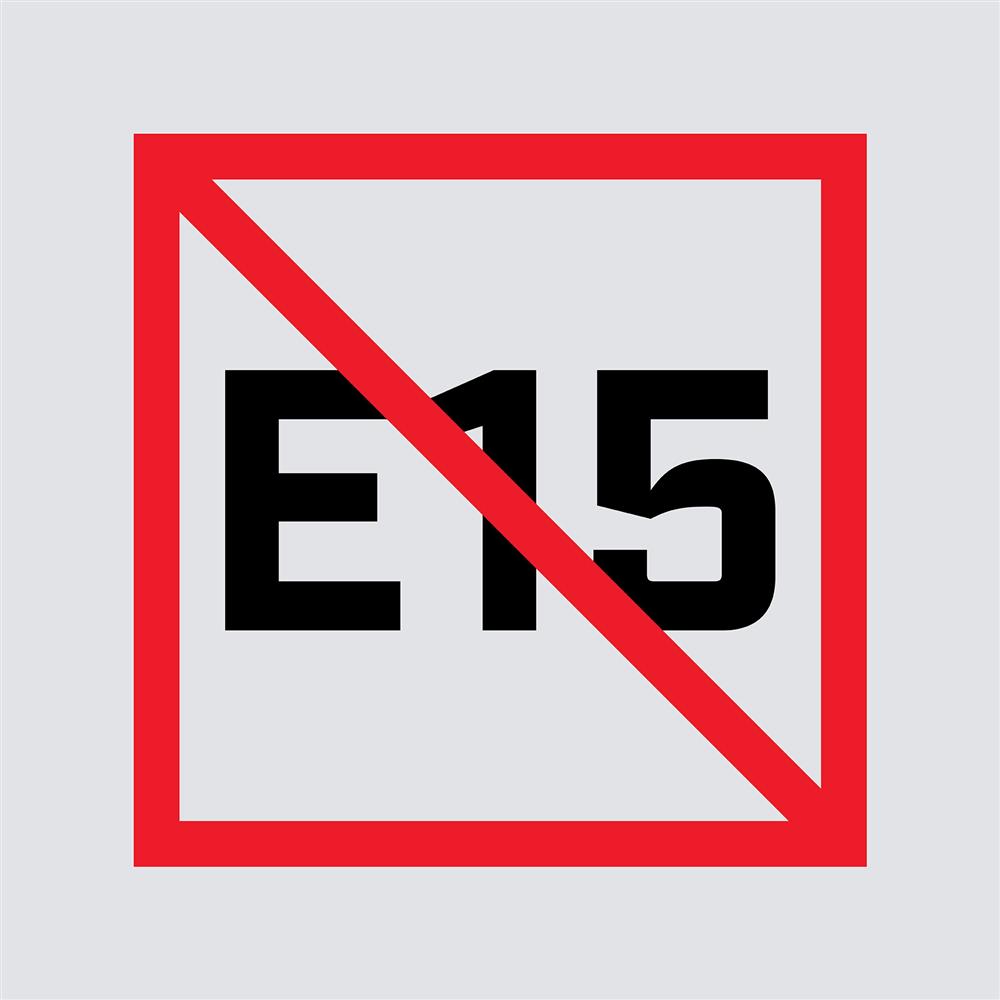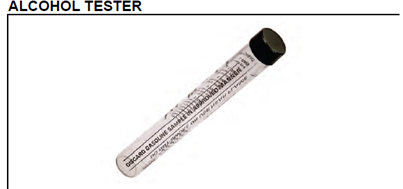
Don’t let E15 fuel damage your marine engine this summer!
Summer 2022! Be extra careful in preparing your boat for outings on the water. A change in fuel availability could pose a risk to your boat’s engine and its warranty, so make sure you are checking ethanol-content labels at the gas pump.
E15 gasoline blend is usually restricted from sale during the summer. However, this year it will be available all year long at gas pumps across the U.S. for the first time in more than 10 years.
E15 gasoline contains up to 15% ethanol derived from corn and sometimes other grains or sugars. When the weather is sunny and hot, it can significantly increase the amount of summertime smog. This increase played a big part in the Environmental Protection Agency’s (EPA) 2011 ban of the sale of E15 during summer months.
With the major global issues that led to inflation, gasoline has become one of the most affected products. As a countermeasure, President Biden announced an EPA policy waiver that permits the sale of E15 gasoline year round.
While it might be a worthwhile alternative for some cars and trucks, E15 is not a good option for marine engines. That’s because ethanol attracts water from condensation and the air, which in turn can wreak havoc on a combustion engine. Problems that can be caused by too much ethanol in fuel (more than 10%) include the following:
- Corrosion of metal parts
- Deterioration of rubber or plastic parts
- Fuel permeation through rubber fuel lines
- Starting and operating difficulties
For these reasons and more, warranty coverage on a broad array of repairs and services will become void on any Mercury engine that has been shown to have been operated using fuel with an ethanol content of more than 10%.
In conclusion, please remember to check the ethanol-content labels at the gas pump. And to avoid serious damage to your engine and voiding some warranty coverages, be sure to only use gasoline with an ethanol content of 10% or less for your boat. Mercury offers an alcohol tester to find the ethanol/alcohol percentage in your gasoline. You can purchase one on our site here.
View all fuel system care products here.
Below is a list of Fuel and Fuel Systems FAQ's from Mercury Marines website:
QUESTION:
What is phase separation, and how do I deal with it?
If significant amounts of water are present in a fuel tank with gasoline that contains ethanol, the water will be drawn into the fuel until the saturation point is reached for the three-component mixture of water + gasoline + ethanol. Beyond this level of water, phase separation could cause most of the ethanol and water to separate from the bulk fuel and drop to the bottom of the tank, leaving gasoline with a significantly reduced level of ethanol in the upper phase. If the lower phase of water and ethanol is large enough to reach the fuel inlet, it could be pumped directly to the engine and cause significant problems. Even if the ethanol water phase at the bottom of the tank is not drawn into the fuel inlet, the reduced ethanol level of the fuel reduces the octane rating by as much as 3 octane numbers, which could result in engine problems.
The level at which phase separation can occur is determined by a number of variables, including the amount of ethanol, the composition of the fuel, the temperature of the environment and the presence of contaminants. It is very important (A) that the system is inspected for significant quantities of water in the tank before using gasoline with ethanol and (B) to limit exposure of the fuel tank to excess water. If phase separation has occurred, it is necessary to completely remove all free water from the system and replace the fuel before continuing operation. Otherwise, engine problems could occur.
Is an additive available that can prevent phase separation?
There is no practical additive that can prevent phase separation from occurring. The only practical solution is to keep water from accumulating in the tank in the first place.
Should I add an additional fine-micron filter to the system to prevent debris from entering the engine?
The addition of another filter to the system will create another possible flow restriction that can starve the engine of fuel. Mercury already provides the appropriate level of filtration to protect the engine from debris.
Are older fuel lines prone to failure from ethanol-based fuels? What about gaskets?
During the 1980s, many rubber components for use in fuel systems were developed to withstand exposure to fuels containing ethanol. If rubber components in a fuel system are suspected to be of this vintage or older it may be advisable to replace them with newer ethanol-safe components before using fuels containing ethanol. Check with the manufacturer for advice or frequently inspect these fuel-system components for signs of swelling or deterioration and replace if problems are noted.
Can ethanol-blended fuels affect the performance of traditional carbureted two-stroke outboards?
Two-stroke outboards should experience little or no decrease in performance due to gasoline fuels containing up to 10-percent ethanol when operated according to Mercury's standard recommendations. When gasoline with ethanol is used for the first time after a fuel changeover from MTBE, the tank must be completely free of water prior to introduction of gasoline with ethanol. Otherwise, phase separation could occur that could cause filter plugging or damage to the engine. (It is probably better for a boat owner to fill the fuel tanks with ethanol fuel for the first time when the tank is low on fuel, but that is not critical. There should be no difficulties if the tank is clean and free from water. If the tank is not free from water, a partial load of fuel will more easily phase separate because with less ethanol in place it takes less water to cause phase separation. The important thing for boaters to concern themselves with is the presence of water in their tanks.)
If an engine is a 1990 or older model, frequent inspections of all fuel-system components are advised to identify any signs of leakage, softening, hardening, swelling or corrosion. If any sign of leakage or deterioration is observed, replacement of the affected components is required before further operation.
How does ethanol affect my fiberglass fuel tank?
Fiberglass tanks manufactured prior to 1991 may not be compatible with gasoline containing ethanol. It has been reported that, in the presence of ethanol, some resins may be drawn out of fiberglass and carried into the engine where severe damage could occur. If an older fiberglass tank is used, check with the manufacturer to determine if gasoline with ethanol can be safely used.
Ethanol is replacing MTBE in my region - what should I do?
Before gasoline with ethanol is introduced to your fuel tank, ask your boat manufacturer if any special precautions should be considered with the use of fuel containing ethanol. Check for the presence of water in the fuel tank. If any is found, remove all water and dry the tank completely. As a precaution, it is advisable to carry a few extra filters in case filter plugging becomes a problem during boating.
Are there any additives that can allow the phase-separated mixture to remix when added to the fuel tank?
No, the only way to avoid further problems is to remove the water, dispose of the depleted fuel, clean the tank and start with a fresh, dry load of fuel.
Is there a simple solution to water condensation in the tank as a result of ethanol?
It is best to maintain a full tank of fuel when the engine is not in use. This will reduce the void space above the fuel and will reduce the flow of air in and out of the tank with changes in temperature. This will reduce condensation on the internal walls of the tank and will limit exposure of the ethanol in the fuel to humidity and condensation.
Will the use of fuels containing ethanol void my engine warranty?
Fuels containing up to 10 percent ethanol are considered acceptable for use in Mercury engines. Fuels containing higher levels of ethanol are not considered acceptable for use, and the use of fuels containing ethanol higher than 10 percent can void the warranty.
Mercury offers an Alcohol Tester (see image below) to find the ethanol/alcohol percentage in gasoline.

What should be done when storing boats with ethanol-blended fuels for extended periods?
Follow the instructions for normal storage preparation found in the Warranty Information and Operation and Maintenance manuals. When preparing to store a boat for extended periods of two months or more, it is best to completely remove all fuel from the tank. If it is difficult or not possible to remove the fuel, maintaining a full tank of fuel with a fuel stabilizer added to provide fuel stability and corrosion protection is recommended. It is best to add the stabilizer and fuel treatment to the tank at the recommended dosage, run the engine for 10 minutes to allow the system to be cleaned, shut off the fuel valve to interrupt the fuel supply and allow the engine to run until it stops, and top off the tank until it’s full to reduce the amount of exchange with the air that might bring in condensation. Do not cap the tank vent and do not fill with fuel to the point of overflowing. Some extra space should be maintained in the tank to allow for expansion and contraction of the fuel with temperature changes. A partially full tank is not recommended because the void space above the fuel allows air movement that can bring in water through condensation as the air temperature moves up and down. This condensation could potentially become a problem.
Mercury Marine Quickstor can help maintain fuel systems in storage. Quickstor contains oxidation inhibitors to reduce oxidation and gum formation, metal-chelating agents to protect metal components from corrosion, and water-absorbing agents to reduce the presence of free water.
